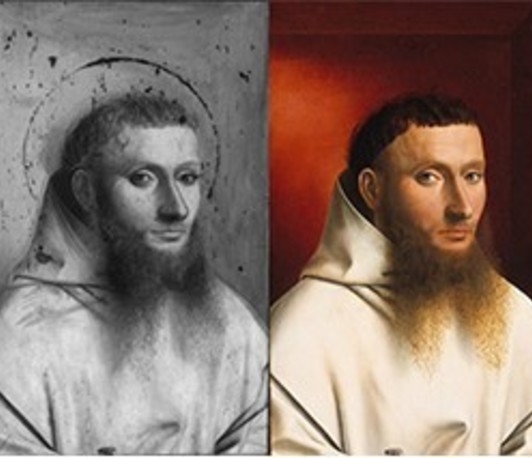Static Pictures, Living Portraits: Repainting, Conservation, and the Ontology of Images
Research Seminars Series "Conserving Histories of Art"
- Date: Oct 20, 2022
- Time: 11:00 AM - 01:00 PM (Local Time Germany)
- Speaker: Adam Jasienski in conversation with Michael Cole
- Location: Villino Stroganoff, Via Gregoriana 22, RM 00187 Rome. In person and online

The
proceedings of a 1651 trail conducted by the Holy Office of the Inquisition
regarding the proliferation of a bishop’s portraits in the central-Mexican city
of Puebla offer an insight into the sorts of interferences that took place.
According to the proceedings, people treated the portraits as sacred images,
even adding wings and other holy attributes to them, effectively rendering the
sitter a saint. The “new”
images were often only slightly different to earlier versions, but they
differed drastically in terms of their spiritual efficacy and potential usage:
in sum, in terms of their ontology. The case reveals the flexibility with which
early modern individuals lived with images, and illustrates that portraits were
not permanent commemorations. This talk considers the inherent susceptibility
of portraiture to repainting, as well as later conservation campaigns that
aimed to return these images to their “original” state.
Adam Jasienski is
Associate Professor of Art History at Southern Methodist University in Dallas,
Texas. He is a specialist in 16th- and 17th-century visual culture,
particularly in Spain and Latin America. His forthcoming book Praying to
Portraits: Audience, Identity, and the Inquisition in the Early Modern Hispanic
World (Penn State University Press, April 2023) examines the intersections
of portraiture and religious imagery in the early modern Hispanic world. His
current research is supported by Villa I Tatti and the Madrid Institute for
Advanced Study at the Casa de Velázquez. He is the 2022-23 Marilynn Thoma Fellow
in Art of the Spanish Americas.
Michael Cole is Howard McP. Davis
Professor of Art History at Columbia University in New York. He is a specialist
of Renaissance and Baroque European art, and has written extensively on the
history of artistic practices (why things were made the way they were, how
techniques themselves could take on or change in meaning over time) and
materials (with essays on the early modern conception of bronze, stone, wax,
clay, and on the aesthetic of impoverishment). His most recent books include Sofonisba’s
Lesson: A Renaissance Artist and Her Work (Princeton University Press,
2019), and Leonardo, Michelangelo and the Art of the Figure (Yale
University Press, 2015).
Online participation via Zoom will be possible. To join click here.
Scientific Organization: Lise Meitner Research Group "Decay, Loss, and Conservation in Art
History"